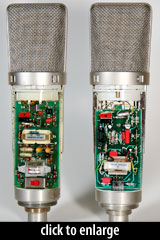

 Neumann U 87 Ai
Neumann U 87 Ai
Multi-Pattern Condenser Microphone
The U 87 Ai is Neumann’s latest version of the classic large-diaphragm, tripolar FET condenser.
The mic offers three pickup patterns via a switch mounted below the headbasket. Cardioid, Omni, and Figure-8 patterns are supported.
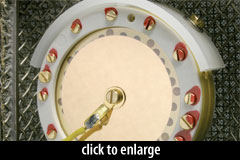 The mic has a version of Neumann’s K67 large-diaphragm capsule. It uses two 34mm backplates, separated by a thin aluminum spacer. Each half of the capsule has a 26mm, center-terminated, gold-plated Mylar diaphragm, mounted with plastic rings onto the brass backplates. The model number for this capsule is “K870/K67”; the part number is 53225. It attaches to the amplifier circuit with 3 wires: front, back, and ground.
The mic has a version of Neumann’s K67 large-diaphragm capsule. It uses two 34mm backplates, separated by a thin aluminum spacer. Each half of the capsule has a 26mm, center-terminated, gold-plated Mylar diaphragm, mounted with plastic rings onto the brass backplates. The model number for this capsule is “K870/K67”; the part number is 53225. It attaches to the amplifier circuit with 3 wires: front, back, and ground.
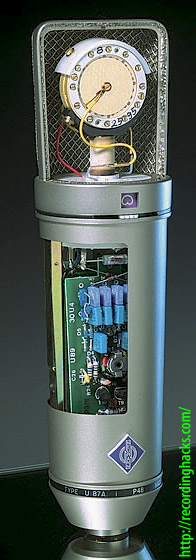 What is the difference between the U-87i and U-87Ai microphones?
What is the difference between the U-87i and U-87Ai microphones?
The ‘A’ version of the U-87 was introduced in 1986, although the basic U-87 design dates to 1967.
Neumann
The letter ‘A’ in the name indicates a more recent generation, as compared to the U 87i microphones that were built from 1967 to 1986. Modifications apply to the electronic components of the microphone only; the capsule remains unchanged.The present-day circuitry increases the operational headroom of the U 87 Ai by supplying the bias voltages for the capsule through a reduced resistance. The result is a higher sensitivity of 10dB for identical sound pressure levels, and an improved S/N ratio of 3dB.
 The comment above that “the capsule remains unchanged” presumably refers to the acoustic behavior and sound of the capsule, which did change with the ‘A’ revision of the U87. According to Roessler, the original U87(i) used a 4-wire version of the K67, in which the two backplate halves were isolated from one another through the use of a plastic shim. With the ‘A’ revision, the original 3-wire K67 capsule — renamed K870/67 — was restored to the microphone.
The comment above that “the capsule remains unchanged” presumably refers to the acoustic behavior and sound of the capsule, which did change with the ‘A’ revision of the U87. According to Roessler, the original U87(i) used a 4-wire version of the K67, in which the two backplate halves were isolated from one another through the use of a plastic shim. With the ‘A’ revision, the original 3-wire K67 capsule — renamed K870/67 — was restored to the microphone.
The circuit for the … U-87Ai uses a DC-DC converter, which the original [U-87] did not. This allows for higher internal
voltages to be stabilized from the 48v supply, which in turn allows for better noise figures and more dynamic range. The U-87Ai gives 6dB lower noise and 10dB more signal to noise than its predecessor.
What is the significance of the “U 89” legend on the U-87Ai circuit board?
Neumann
The “U 89” on the electronics of the U 87Ai refers to the use of the DC-DC converter circuit, which is the same as that in the U 89i. The amplifier circuits themselves, however, are different in the two mics.
 What is the history of U-87 capsules?
What is the history of U-87 capsules?
Neumann
The original U 87 (1967 to 1986) used a different capsule (K87) than its predecessor, the U 67 (K67). The [K67 and K87] capsules are acoustically identical, but the two halves of the backplate of the K87 are electrically insulated from each other. So, instead of the typical three connections of a dual-diaphragm design, this one has four.
When the U 87Ai was introduced, the K67 was employed again, as there was no advantage perceived with using the split backplate.
U87 exploded view: photo courtesy Hansén Audio, Sweden
The Neumann U 87 Ai is also known as: U87Ai.
The mic was released in 1986.
Specifications
| Frequency Response - OmnidirectionalClick Graph to Compare! |
|---|
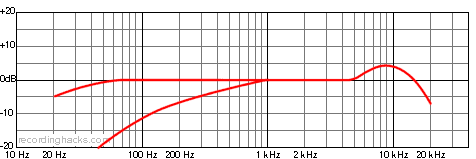 |
| Frequency Response - CardioidClick Graph to Compare! |
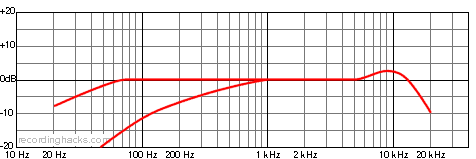 |
| Frequency Response - BidirectionalClick Graph to Compare! |
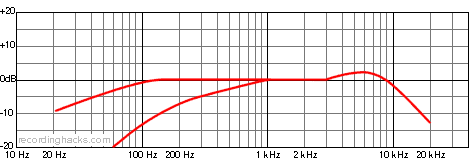 |
| Pickup Patterns | Pads & Filters |
|---|---|
|
Omnidirectional
(20 mV/Pa; 20 - 20,000 Hz) Cardioid (28 mV/Pa; 20 - 20,000 Hz) Bidirectional (22 mV/Pa; 20 - 20,000 Hz) |
|
| Capsule Dimensions | Impedance | SPL/Noise |
|---|---|---|
| Diaphragm diameter: 26mm Capsule diameter: 34mm |
200 Ohms (Low) | Max SPL: 127 dB Self-noise: 12.0 dB(A) |
| Weight | Length | Max Diameter | Interface(s) |
|---|---|---|---|
| 500g (17.64oz) | 200mm (7.87'') | 56mm (2.20'') |
|
| Power Specifications |
|---|
|
Did we get anything wrong on this page? Please let us know!






